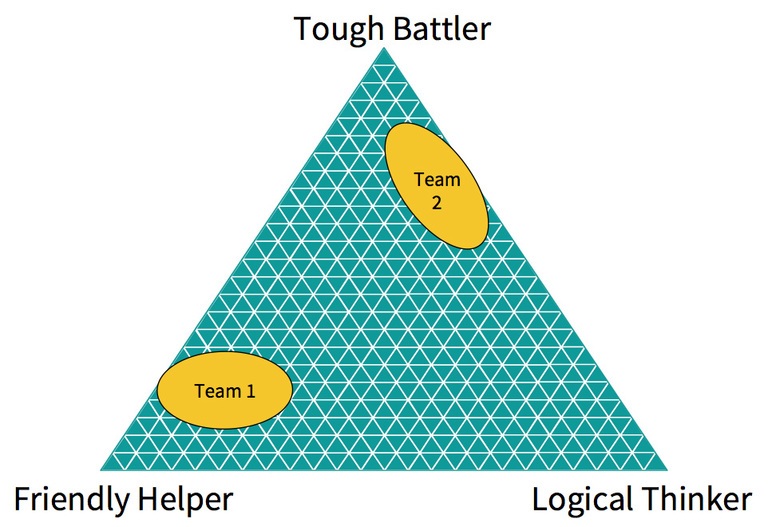Culture Triangle is a motivational activity that helps teams or organizations understand each other better in order to improve collaboration between their units.
This team building activity achieves its objective by talking about, and getting behind, the stereotypes that professionals from different areas hold about each other.
The stereotypes held always have elements of truth within them, but also contain huge generalizations that should not go un-challenged.
This exercise provides an opportunity for the truths to be discussed and worked with, and the myths to be dispelled, providing a firmer foundation as the team goes forward.
Objective
- To surface and start to address some of the underlying problems that arise when representatives from different departments or companies work together.
What Is The Outcome?
- A climate in which differences of perception and practice can be discussed openly and constructively.
Resources Required
- Pack a multi-colored sticky dots (one color per team, each person needs to have one dot of every color).
- Flipchart, pen and paper.
- Open space for people to move around.
- No tables and chairs.
- The slides in this pack.
Process
- The Facilitator presents the two cultural stereotypes slides.
- The Facilitator draws a large triangle on a flip chart and labels it.
- Each Team / Department / Company is allocated a color of a sticky dot.
- The Facilitator distributes a multi-colored series of sticky dots to each individual in the team.
- Each Individual now places the relevant sticky dot on the triangle according to where they think each of the Teams are in terms of cultural stereotypes.
- When this exercise is completed, each Individual is asked how they feel about their Team’s overall positioning on the chart. They can also ask for specific feedback from anyone on the reasons for their positioning.
- The Group now discusses the implications of this exercise for their on-going team-working.
- The Facilitator leads a plenary discussion using the Strengths & Weaknesses slides.
Cultural Stereotypes
Consider the three organizational stereotypes Friendly Helpers, Tough Battlers and Logical Thinkers.

The Culture Triangle Stereotypes
Organizations can be plotted on a culture triangle …
Your Blank Culture Triangle

You can download this template at the bottom of the page
Strengths and Weaknesses
How do Tough Battlers view the strengths and weaknesses of other culture types?

And Friendly Helpers?

And Logical Thinkers?

Ground Rules
- All insights should be treated as constructive feedback and an opportunity to initiate a change in culture where appropriate.
- This is not about ‘us and them’ but about collaboration in general. A strong collaborative environment benefits everyone when it works well so hold this as the vision.
Roles & Responsibilities
| Facilitator | Participants |
|---|---|
| Leads the process. | Follows the process. |
| Organizes the materials and room setup prior to session start. | Approaches the session with an open mind excited about the feedback they’re about to receive. |
| Prepares the participants for what might be a bumpy ride. |
Secret Sauce
- It’s important participants view what they’re about to hear about themselves as constructive feedback.
- If it looks like there are some who are taking the process personally pull back for a few minutes and discuss the importance of feedback for continuous improvement.
- As the plenary discussion progresses the facilitator will find it useful to capture headlines and actions. An honest purge of emotion and ideas often happens and you want to make sure you capture the essence so the teams move forward after they leave the room.

